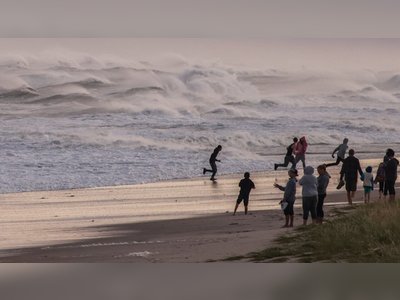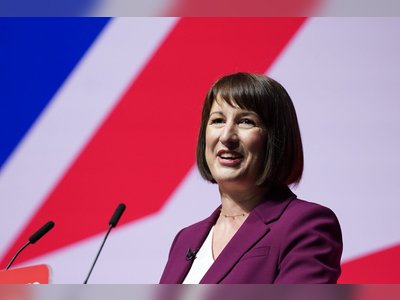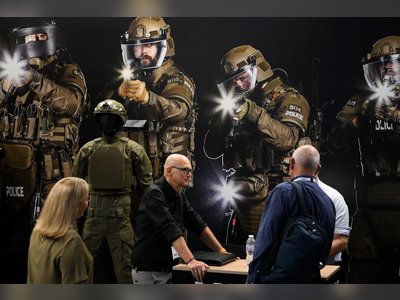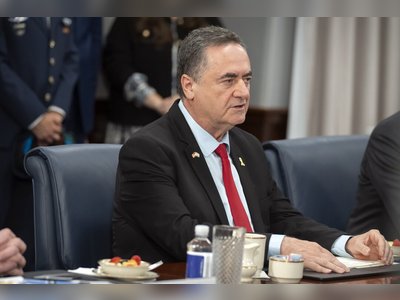Navigating the Third Nuclear Age: A Landscape of Complexity
Admiral Sir Tony Radakin's assertion of a new nuclear paradigm confronts global challenges with historical deterrence strategies.
In a stark assertion marking a profound shift on the global stage, Admiral Sir Tony Radakin has suggested that the world is entering a ‘third nuclear age’ replete with simultaneous and multifaceted dilemmas.
As nuclear technologies proliferate and bygone security architectures erode, his claim distinctly diverges from the Cold War’s binary opposition and the subsequent age of disarmament.
This new epoch is marked by multi-polar threats from Russia, China, North Korea, and Iran, each presenting unique challenges.
Unlike the East-West dichotomy of the Cold War, today's strategic landscape is punctuated by unpredictability.
Traditional deterrence models warrant reconsideration.
Is the endorsement of ‘remote chance’ attacks overly sanguine in today’s volatile milieu?
Quite possibly.
The Admiral advocates for a robust deterrent stance, suggesting that this complexity commands a nuanced comprehension of our capabilities and constraints.
While there is recognition that Russia is unlikely to launch a direct assault on the United Kingdom or North Atlantic Treaty Organization allies due to credible retaliation fears, can we afford to lean on historical deterrents in such erratic times?
Minister Alistair Carns underscores the urgency for rapid and scalable military readiness, flagging that conventional forces could endure curtailed engagements under massive aggression.
This discourse ought to shift toward resilience, adaptability, and reinforced alliances.
How do we safeguard readiness without an over-reliance on nuclear might?
The challenge lies in harmonizing deterrence with the dexterity to tackle asymmetrical threats, including cyber warfare.
The state's investment in innovative technologies and augmented reserve forces is a testament to pivoting toward comprehensive strategic resilience.
Does this reflect learning from past confrontations where rigid doctrines faltered?
Absolutely.
It signifies a shift to a multi-dimensional security framework—one that is fluid and intricate.
As we deliberate on these strategies, it is prudent to heed the counsel of past leaders: ‘The best way to predict the future is to shape it.’ Perhaps we are poised not merely on the brink of another nuclear age but on a transformative epoch where adept policy crafting and technology integration may avert potential crises.
This is an era where foresight could truly become our paramount asset.
In light of these developments, one must contemplate how they will recalibrate foreign policy and our perspectives on global security and collaboration.
As nuclear technologies proliferate and bygone security architectures erode, his claim distinctly diverges from the Cold War’s binary opposition and the subsequent age of disarmament.
This new epoch is marked by multi-polar threats from Russia, China, North Korea, and Iran, each presenting unique challenges.
Unlike the East-West dichotomy of the Cold War, today's strategic landscape is punctuated by unpredictability.
Traditional deterrence models warrant reconsideration.
Is the endorsement of ‘remote chance’ attacks overly sanguine in today’s volatile milieu?
Quite possibly.
The Admiral advocates for a robust deterrent stance, suggesting that this complexity commands a nuanced comprehension of our capabilities and constraints.
While there is recognition that Russia is unlikely to launch a direct assault on the United Kingdom or North Atlantic Treaty Organization allies due to credible retaliation fears, can we afford to lean on historical deterrents in such erratic times?
Minister Alistair Carns underscores the urgency for rapid and scalable military readiness, flagging that conventional forces could endure curtailed engagements under massive aggression.
This discourse ought to shift toward resilience, adaptability, and reinforced alliances.
How do we safeguard readiness without an over-reliance on nuclear might?
The challenge lies in harmonizing deterrence with the dexterity to tackle asymmetrical threats, including cyber warfare.
The state's investment in innovative technologies and augmented reserve forces is a testament to pivoting toward comprehensive strategic resilience.
Does this reflect learning from past confrontations where rigid doctrines faltered?
Absolutely.
It signifies a shift to a multi-dimensional security framework—one that is fluid and intricate.
As we deliberate on these strategies, it is prudent to heed the counsel of past leaders: ‘The best way to predict the future is to shape it.’ Perhaps we are poised not merely on the brink of another nuclear age but on a transformative epoch where adept policy crafting and technology integration may avert potential crises.
This is an era where foresight could truly become our paramount asset.
In light of these developments, one must contemplate how they will recalibrate foreign policy and our perspectives on global security and collaboration.










